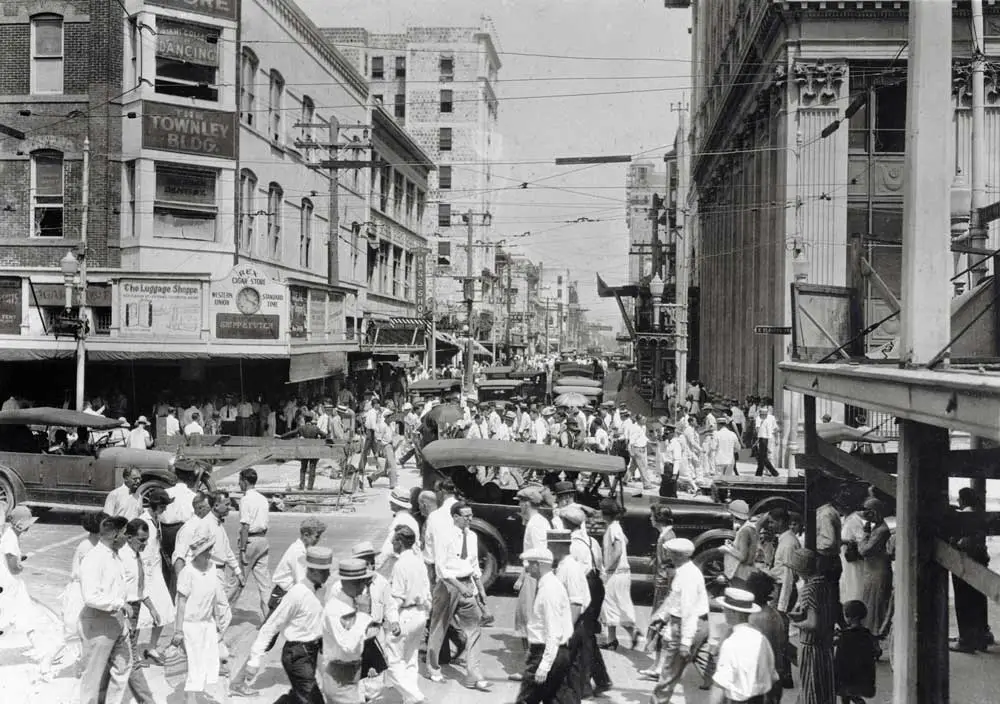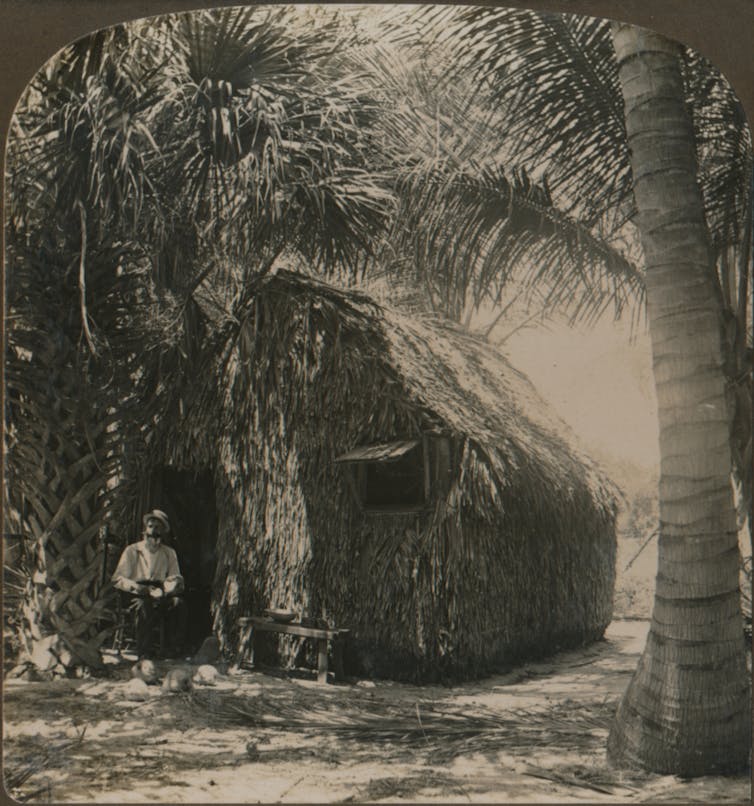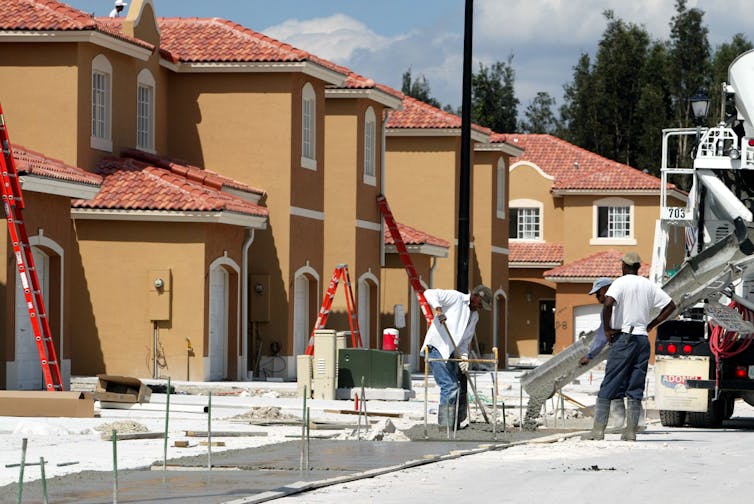
By Robin Faith Bachin
Hurricane Ian barreled ashore with winds of up to 150 mph (240 kph) on Florida’s southwest coast on Sept. 28, 2022.
The storm’s powerful winds and torrential rains reduced entire communities to rubble, killing more than 120 people, including many who drowned in floodwaters resulting from the nearly 18-foot (5.5-meter) storm surge. Bridges connecting Sanibel, Captiva and other barrier islands with the mainland flooded and crumbled, isolating those areas.
Estimates of the economic toll are still preliminary. But as a historian who studies South Florida’s cities and environment, I’m certain that the havoc Ian wreaked will make it among the worst storms on record, along with Harvey and Maria in 2017 and Katrina in 2005.
And based on how Florida has responded to similar devastation in the past, I highly doubt that Ian will do much to slow the pace of the state’s rapid population growth in the near future.
Snowbirds are changing their routes
Over 22 million people currently live in Florida.
That’s about 37% more than the 16 million who resided in the state in 2000. And demographers project that the population will continue increasing, to about 25 million within the next decade.
Florida consistently ranks as the top destination for Americans who relocate to another state.
But many Florida residents spend only the winter months there, returning when the climate warms up back home. In the weeks that followed the storm, analysts were predicting that most of these annual short-term residents – called snowbirds – will not forgo their annual voyage. Instead, many say they’ll simply shift their migratory course and land somewhere else in Florida.
South Florida real estate agents are bracing for stronger-than-usual demand for seasonal rentals in Dade and Broward counties on Florida’s southeast coast, which escaped Ian’s wrath. The extra interest is leading to further spikes in the already overheated real estate markets in places like Miami and Fort Lauderdale.
Today’s new and part-time Floridians are drawn by the same factors that have lured settlers and snowbirds for a century: warm weather and waterfront views, along with lower taxes and fewer regulations than in other parts of the country.
Draining the swampland
Early developers didn’t let inhospitable environments deter them. In the decades after the Civil War, they transformed the peninsular state’s mosquito-ridden, alligator-occupied swampland into hotels, homesteads and farmland.
Florida promoters lured tourists and settlers alike with promises of wealth, land and leisure, whether their sales pitches had to do with citrus and sugar, or sun and sand. Engineers used modern technology to accomplish the large-scale transformation and make way for unprecedented land speculation and development.
Everglades drainage began in earnest in the 1880s when a wealthy Philadelphian named Hamilton Disston created the Okeechobee Land Co. to develop a system of canals that would facilitate “land reclamation.”
Disston purchased over 4 million acres the state had designated as uninhabitable swampland in exchange for US$1 million and his promise to transform it. In 1881, The New York Times called this “the largest purchase of land ever made by a single person in the world.”
His gambit sparked Florida’s first real estate boom.
Disston sent brochures around the country, and to people as far away as Scotland, Denmark, Germany and Italy, that touted Florida’s “inexhaustibly rich lands” and an “equitable and lovely climate where merely to live is a pleasure, a luxury heretofore accessible only to millionaires,” according to Frank B. Sessa’s 1950 history of greater Miami.
Disston and others began selling reclaimed land to railroads, farming interests and land developers. By the early 20th century, inland drainage was giving rise to the sugar, citrus and winter vegetable industries.
The drainage made it possible for the railroad magnates Henry Flagler and Henry Plant to extend their railroads to southeast and southwest Florida, respectively. Train travel greatly expanded opportunities for tourists and new residents by the late 19th century.

Hulton Archive/Getty Images
Stormy weather from the start
Attempts to control water on the ground, however, couldn’t curtail weather-related hazards. In 1926, a hurricane slammed into Miami, leaving more than 390 people dead and causing property damage of more than $76 million.
A Western Union telegram from Jessie Wirth Munroe, a survivor, read like a text from someone who had endured Hurricane Ian: “We are safe. Water front completely destroyed.”
Subsequent storms wrought greater devastation.
A 1928 hurricane killed over 2,500 people just south of Lake Okeechobee, most of them Black farmworkers laboring in the new agricultural town of Belle Glade, which was washed away.
In 1935, a Labor Day storm hit the Civilian Conservation Corps camps in the Florida Keys, where workers, many of them World War I veterans, were building a highway that would link mainland Florida to Key West.
“Clinging to beds, using mattresses as overhead cover, the people of the Keys had watched large rocks roll about like pebbles, buildings crumble like houses of cards, water lift up houses and carry them off,” wrote Helen Muir, a journalist who moved to Miami in 1934 and chronicled the city’s growth. “The hurricane moved in like a giant mowing machine and leveled everything.”
No stopping the newcomers
Yet people kept coming, especially after World War II and the advent of widespread air conditioning.
Many of the close to 3 million people who arrived between 1940 and 1960 were veterans who had trained in South Florida during World War II.
In addition, millions more immigrated from the Caribbean and Latin America as transportation become easier and cheaper.
In particular, people fleeing political persecution and economic instability in places such as Cuba, Haiti and, more recently, Venezuela and Central America have settled in Florida.

Joe Raedle/Getty Images
Rebuilding and rebuilding
Though each storm seemed to threaten the population boom, the new arrivals tended to stick around. Civic boosters, business leaders and policymakers have invariably promised to rebuild.
After Hurricane Andrew, a Category 5 storm, slammed into South Florida in 1992, the state imposed a stronger and more uniform building code. The authorities invested in additional storm preparedness efforts after the spate of hurricanes hit the state in 2004.
Could these patterns change after Hurricane Ian?
Windstorm insurance premiums were climbing beyond the reach of many homeowners before it hit. Analysts predict that premiums will continue to rise, making it harder for residents to afford to remain in Florida and even more challenging for new homebuyers to secure policies.
It remains to be seen if the pro-growth mentality and belief in technological innovation that have shaped Florida’s history can forestall the challenges of climate change and the increasingly severe storms it brings about in the decades ahead.
![]()
Robin Faith Bachin is Professor of History at the University of Miami.




























James says
As I’ve said, many people move to Florida for all the wrong reasons. Historically there are three groups that in my opinion dominated…
1 – The very wealthy that came a few months out of the year to soak up the sun, party and use their property as a tax dodge.
2 – Criminals “on the lam” wanting to “lie low.”
3 – Retirees.
Unfortunately, it seems most people today who end up here are running from something (other than the police) and think they’ll find it here.
But in the immortal words of Julius Henry “Groucho” Marx… “Can you get stucco?… Oh, can you get stuck-oh!”
Just my opinion.
James says
“… Unfortunately, it seems most people today who end up here are running from something (other than the police) and think they’ll find it here. …”
Oops, what I meant to say… it seems most people today who end up here are running from something (crime, rising cost of living, etc.) or searching for something (jobs, low cost of living, etc.) and think they’ll find it here.
Michael Cocchiola says
I don’t fear Florida’s violent hurricanes. Now, Florida’s extremist Republicans… that’s a real threat.
Justsayin says
And yet almost six thousand New Yorkers (VERY LIBERIAL STATE) turned in their driver licenses in the month of August for a Florida license. Please square that circle, https://nypost.com/2022/09/20/record-number-of-new-yorkers-swap-to-florida-licenses/
What will you do if the people moving here are more “extremist Republicans”? There is a story today that Miami-Dade may go republican for the first time in 20 years. Why you ask? the Hispanics. Will they be targeted as the “brown extremist” next? https://www.nbcnews.com/news/latino/desantis-popularity-latinos-boosting-chances-first-republican-20-years-rcna53427
JimBob says
“Liberial”—I saw what you did there! Remember, though, many Cubans used to identify as Latinx before they were seduced into republicanism.
James says
“… And yet almost six thousand New Yorkers (VERY LIBERIAL STATE) turned in their driver licenses in the month of August for a Florida license. Please square that circle… ”
It’s what I like to call the “Real Estate-Go-Round,” which I suspect has existed for some time… I will not bother to go into the details. But ultimately it, and almost every other phenomenon related to why people pick up and leave NY is economics driven… it just got too damned expensive to live (or even exist) there. And in that sense I, like so many others, were indeed “replaced.” It’s not a blue or a red issue… nor black, white, brown or yellow for that matter… just green.
Joe D says
After 30 years of vacationing in Florida, I made the decision to RETIRE here “eventually “….loved the west coastal area, but warm gulf waters intensified storms there, so I looked elsewhere. Central Florida (Orlando area) was bustling, but the central Florida humidity was not my friend. Ft Lauderdale and Miami were exciting, but way too crowded, expensive, and too long of a drive back to the Maryland area to visit family. Decided on Flagler Beach (less commercially developed, less touristy, but close to everything I wanted). St Augustine, and Jacksonville to the north, Daytona’s wild ride to the south, and Orlando’s nonstop entertainment to the west.
BUT after deciding on Flagler, it took 20 more years to find a poured concrete, elevated, beachfront townhouse I could AFFORD! I love the views, and the ocean breeze ( correct me if I’m wrong, but Flagler is supposed to have the highest ocean breezes anywhere in Florida).
The next concern was storm related….was not interested in having my life and property turned upside down by flooding or wind damage from storms. I chose an elevated group of townhouses (12 ft above sea level with a protected dune in front, and the first living level raised an additional 8 ft more). Poured concrete walls and concrete slab floors and roof completed the storm protection requirements I had. This choice proved to be correct as exemplified by no Matthew damage, and only lost my roof top HVAC cover in Ian.
I AM concerned about the residential expansion ( although I would welcome the additional property tax base, considering my property taxes on a 2 bedroom, 1 1/2 bath 1150 sq ft town house are now $6000). Property taxes have risen $500 each year. There seems to be a “look the other way” situation, when developers are granted exceptions to the 16 hour evacuation rule (compounded by multiple high rise developments planed and approved)….with appeals by developers all the way to the current Governor’s office (Bay Harbor in Fort Myers), to get the evacuation/housing density limits exempted. Flood and storm experts estimated that the Fort Myers developed area in Bay Harbor would take 96 hrs ( not a typo) to evacuate!
The developers apparently offered to build on site “hurricane shelters “ on-site as an evacuation alternative. Such a proposal would help if the danger were merely WIND, but inadequate with a 16 ft wall of water.
Do we want the same kind of situation in the Flagler Co area? Some developments have an essentially “one way in and one way out” design (for both security, and protection from water intrusion). The 16 hour evacuation rule was designed to save lives. Who expected in their wildest dreams, we would see waist high water in Orlando?!
Safety of the population should be the TOP priority of planning for the county